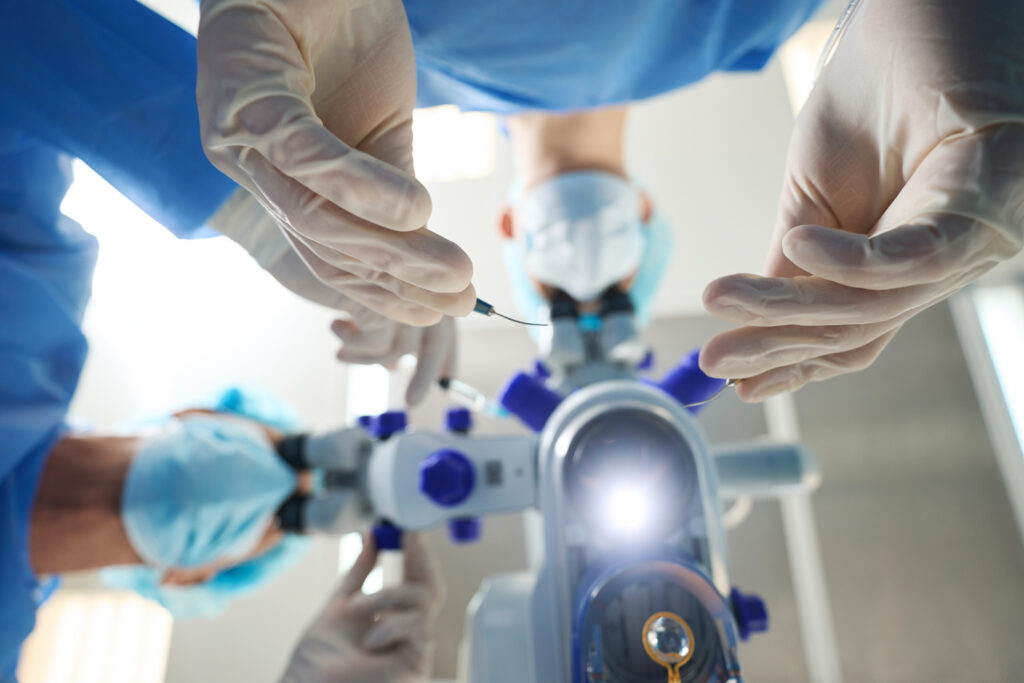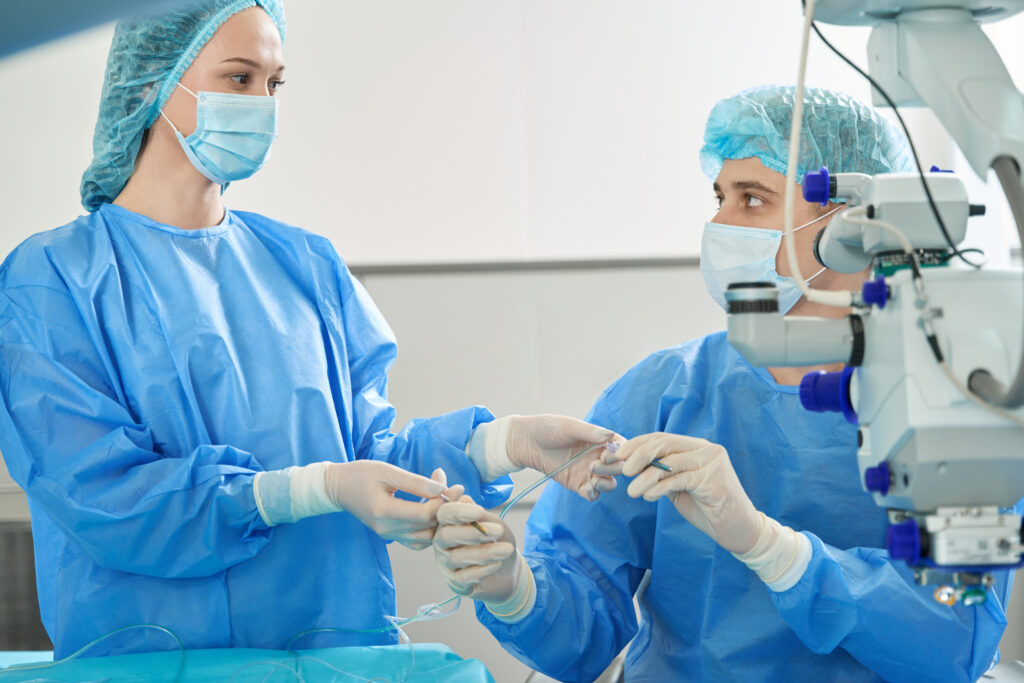The period following your glaucoma surgery is not a time for complacency. Under the watchful guidance of your glaucoma specialist or eye doctor, this important moment is where eye health attention can make all the difference. Remember, the goal is not just to heal but to heal well, and that requires knowledge, patience, and dedication.
What is Glaucoma Surgery?
Glaucoma surgery is a critical intervention designed to lower intraocular pressure and prevent further damage to the optic nerve from glaucoma. There are many different procedures your glaucoma specialist or eye doctor may recommend when medicated eye drops aren’t enough, depending on your unique condition. Your glaucoma condition categorizes into one of three types: open-angle glaucoma, angle-closure glaucoma, and normal-tension glaucoma.
Glaucoma Surgery Types
Minimally-invasive glaucoma surgery (MIGS) involves the placement of a microscopic stent to bypass the natural fluid drainage channels of the eye. This procedure aims to enhance fluid outflow, reducing the pressure inside the eye.
Trabeculectomy, on the other hand, is a more traditional and invasive form of glaucoma surgery. This procedure involves creating a new drainage pathway for the fluid inside the eye, often called an ‘eye drain,’ to reduce intraocular pressure. This process helps to alleviate the effects of glaucoma by improving the flow of fluid from the eye.
Tube implants, or glaucoma drainage devices, involve the insertion of a small, flexible tube, usually made of silicone, into the eye. This tube serves as an artificial channel, allowing fluid to drain from the eye and relieving the pressure on the optic nerve.
Selective Laser Trabeculoplasty (SLT) is a form of glaucoma laser surgery used primarily for patients with open-angle glaucoma. SLT uses short pulses of low-energy laser light to stimulate the drainage tissue in the eye, helping to improve fluid outflow and thus reduce intraocular pressure. Remember, your glaucoma eye specialist or eye doctor will recommend the most effective surgery type based on your specific condition.
What to Expect After Glaucoma Surgery
While individual experiences may vary, the general timeline post-glaucoma surgery could be roughly outlined as follows:
- First Week: This is a vital healing period. You might experience temporary blurry vision and mild discomfort. Use prescribed eye drops and avoid any strenuous activities during this time.
- First Month: Regular follow-up appointments with your eye doctor will monitor the progress of your recovery. You may experience medication adjustments during this period.
- Three to Six Months: By this time, the full benefits of the surgery should start to appear. However, regular check-ups with your glaucoma specialist are still necessary to monitor intraocular pressure and eye health.

7 Tips for Smooth Recovery After Glaucoma Surgery
Here are some tips based on expert research that can help you navigate the healing process effectively:
- Ensure the surgery’s objective is achieved: A day after the surgery, your specialist will check your eye to ensure the surgery is achieving its goal—lowering the intraocular pressure (IOP) and draining the aqueous humor efficiently.
- Protect your eye from external injury: The operated eye should be covered until the following day to prevent accidental trauma. If the other eye has no vision, the operated eye is not covered, but a perforated eye shield is placed instead.
- Maintain hygiene to prevent infection: Keep your face clean and avoid touching the eye. You may bathe and shower, but avoid bending forward or touching the operated eye. Make sure to wash your hands before applying eye drops.
- Manage inflammation and pain: Some degree of redness and swelling is expected after the operation. An Anti-inflammatory eye drop prescription can manage this. If you are still experiencing eye pain, you can manage it with mild analgesics.
- Maintain regular follow-ups: Regular check-ups with your glaucoma specialist are crucial to monitor the healing process and detect any postoperative complications early.
- Stay alert for signs of complications: Rapid deterioration of vision, increased redness, and pain, or eye discharge are signs of potential complications and should be reported to your specialist immediately.
- Continue to protect your eye in the long term: Especially in sports, physical contact activities, and windy weather, the eye needs to be protected. UVB sunglasses during outdoor activities can give you this protection.
Start Your Road To Recovery with Center For Sight
If you have any questions or concerns, seek Center For Sight in Southwest Florida. Our licensed ophthalmologists will guide you through the glaucoma recovery process.
Among our ophthalmologists, Dr. Julie A. Carter is a specialist in glaucoma diagnosis and treatment and a Laser Cataract & Lens Replacement Surgeon. With his exceptional medical training and extensive experience with the latest technology, he delivers superior cataract and glaucoma care to patients, staying on the leading edge of research and treatment. Contact us today to schedule a consultation with Dr. Julie and learn more about our comprehensive glaucoma care services.
**Please note that the suggestions provided in this blog are for general informational purposes only and may not be suitable for your specific insurance plan and glaucoma needs. It is important to consult a qualified healthcare professional for personalized advice and treatment.**






